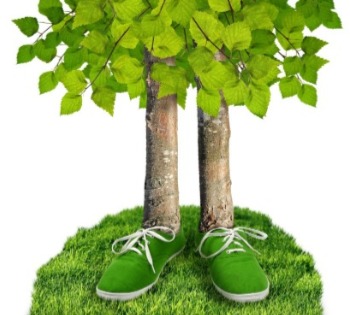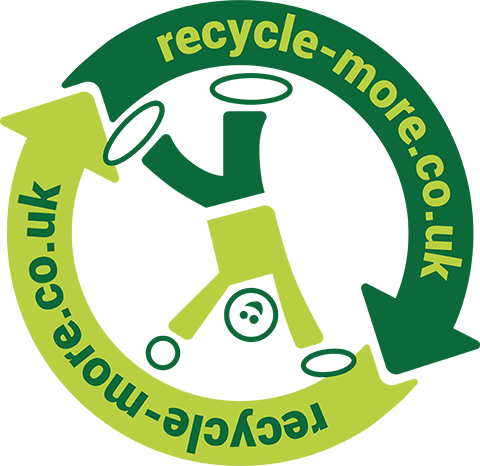
Minimising your impact: Eco-friendly practices on the move
Hannah Johnson
Dec 04, 19
When you’re out and about, convenience is king. Whether it be a coffee to get you through the daily commute, a quick sandwich while you’re out shopping, or a bottle of water for a long train journey, most people will need to consume goods on the go from time to time. The UK’s reliance on food-to-go is expected to grow by more than 25% over the next 5 years.
Meanwhile, public concern over climate change in the UK has reached a record high, with 85% of adults now being worried about global warming. Single-use plastic packaging has also been targeted for elimination by many organisations and campaigns. In fact, “single-use” became the Word of the Year in 2018.
The question is, can you do both? Is it possible to maintain a busy on-the-go lifestyle and do your bit for the planet? Some say that the answer is going vegan, or only using electric vehicles (or no vehicle at all). That just isn’t practical for everyone, but there are things you can do to leave a smaller footprint on the Earth whilst out and about.
1. Reusable Coffee Cup
If you are a familiar face at the local coffee shop, switching from a disposable coffee cup to a reusable one could be a good place to start. For example, by using a reusable coffee cup 3 times a week, you will prevent 3 kg of waste each year. If everyone in the UK made the switch, we could prevent over 100,000 tonnes of waste each year. Most coffee chains offer a discount if you bring your own cup (from 20-50 pence depending on where you go). At 3 coffees per week, you could save up to £78 per year!
But what if you forget your reusable cup? Try your best to find a place that can recycle it. Valpak has teamed up with Costa Coffee to establish a National Paper Cup Recycling Scheme, and other coffee chains have signed up to this too – that means you can drop off your used cups in store. Some train stations now have specific collections of disposable coffee cups, such as London Marylebone.



2. Reusable Water Bottle
Everyone needs to stay hydrated. Bottled water sales in the UK have seen substantial growth over recent years, with over 7.7 billion plastic bottles being consumed annually. Several studies have shown that there is little (if any) health benefit from drinking bottled water instead of tap water. So why do we do it? It again comes down to convenience – being able to quickly grab a drink while you’re out.
Switching to a reusable bottle can be even more convenient, cutting out the need to go into a shop, saving time and money. The average cost of tap water in the UK is 0.1 pence per litre, whereas bottled water costs 65 pence per litre. On top of that, far less waste would be created if everyone made the switch, putting less strain on the planet. The average plastic water bottle weighs around 10 g and if all 7.7 billion bottles that are usually consumed in the UK were avoided by switching to reusable bottles, there would be 77,000 tonnes less plastic waste each year.
Refilling your water bottle on the go is getting much easier to do. The Refill app shows you where you can go for a top up near you and some places display the Refill logo in their window, too. Even if they are not officially part of the Refill group, others may be happy to fill your water bottle up as well if you ask. There is also an increasing number of water refill points appearing in train stations and in public places.
On those days when you’re in a rush and leave your water bottle at home, its not the end of the world. Try sticking to a clear, colourless plastic bottle for whatever drink you buy, and make sure you put it in the recycling bin and not general waste. Don’t see a bin while you’re out? Hold onto your bottle and put it in your recycling bin at home.
3. Think before you buy
If you are on the go over lunch and need to refuel, take a couple of seconds to think about what packaging your food comes in and if there are easy ways to use less. Instead of picking up that bag of apple slices, why not buy a whole apple? If there is an option of pasta in a coloured or opaque plastic pot and a clear one, pick the clear one (much easier to recycle). Any food that is left in the packaging is a problem for recycling, so make sure it is as clean as possible when you put it in the recycling bin, or you could always hang on to it until you get home where you can give it a good clean.
Some packaging is now marketed as being compostable; however, this rarely means it would breakdown in your compost heap at home. It would need to be in an industrial composting plant under specific conditions. That makes it a lot harder to find the correct place to dispose of your packaging once you’ve eaten the contents. Even if you could find a food waste bin while you’re out and about, your packaging would likely get filtered out of it before it could be composted, because it is difficult for staff to identify which packaging is or isn’t going to contaminate the compost. Until there is a widely established route to collect and process all compostable packaging, you would be better off buying goods in standard packaging where recycling is already in place.
At the end of the day, it is your waste. Your responsibility.
Disclaimer: The opinions expressed in this weblog represent those of the author, Hannah Johnson, and are not those of recycle-more, Valpak Limited or any other organisation.





